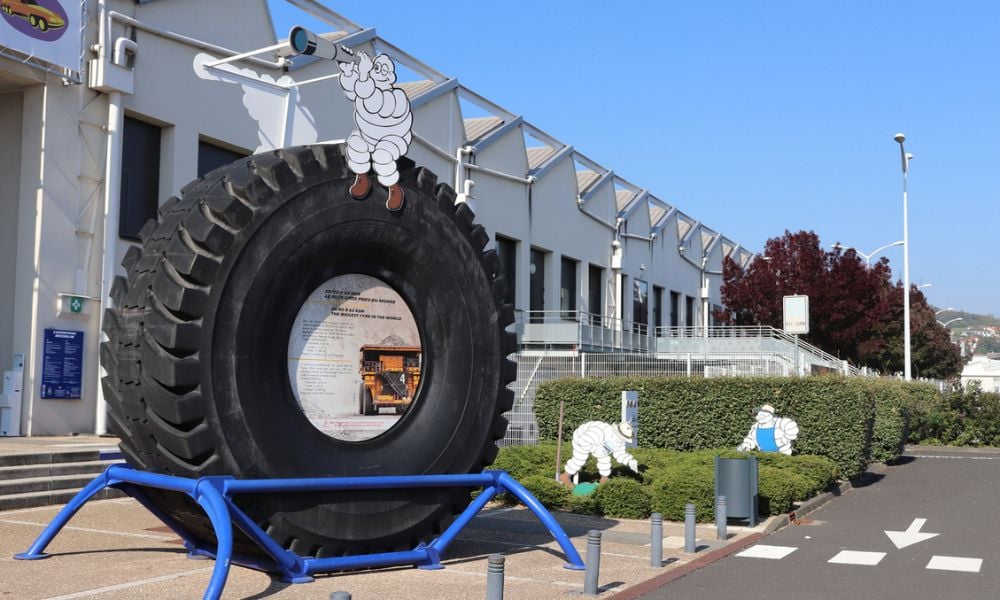One organizational psychologist offers advice on stamping out inaccurate stereotypes in the workplace.

These days, the Millennial Generation is hyped, perhaps even more than Baby Boomers were hyped in the 1950s and 60s. As I meet with executives around the globe, there is widespread confusion and misunderstanding about generational differences. This is creating stereotypes that are inappropriate, rarely true, and costing corporations millions of dollars tied to Millennial programs that don’t work, low employee engagement, mediocre performance and higher employee turnover.
Millennials are often defined by the group that is roughly 20-35 years old currently—a 15-year span. What’s amazing is how often organizational leaders that I regularly interview at the Metrus Institute try to label these younger employees as needy, coddled, technology snobs, unprepared for organizational life, independent, or scores of other attributes. nd then as we dig deeper, I ask if there are differences between their 20-25 and their 30-35 year old Millennials. “Oh yes” is the typical response. The older Millennials are more ‘settled,’ have clearer goals, understand organizations better, more educated and so forth.
What?! Dial this back for a moment. Of course, they are more mature and understand their goals and organizations better. On Average, they have 10 more years of experience over their younger Millennial cohorts, in a relatively short work history. One of the most interesting differences comes from 30-35 year old Millennials who say they are having a tough time keeping up with technology. Even they are threatened by younger Millennial skills.
And then, the insightful moment of our interviews occurs when I ask, “Think about your 25-30 year olds for a moment. What differences do you see among them?” I begin to hear about introverts and extroverts, high and low performers, high and low creativity, strong and weak service mindsets, good and poor communicators. You get the point! The stereotyping insanity has led to classifying men and women, racial groups, and now generations inappropriately.
Even among a narrow slice of Millennials, there are HUGE individual differences, which have been confirmed by research data from the Metrus Institute that found within-generation differences larger than across generation differences.[i] Across generations, Jennifer Deal at Center for Creative Leadership has found similar values across age groups—integrity, family, spirituality, love, meaning—as well as a desire to learn new things, balance work and non-work, and be part of a successful team. But within any generational group, we find lots of differences in personalities, current work and family needs, type of skills sought, work style and life goals.
Simply put, we must look more appreciatively at individual differences. Failing to do so in our research is tied to low engagement and alignment with the organization, a proven formula for lower performance, retention and productivity.[ii]
Here are a few ways to address stereotyping in your organization:
2. Add Fulfilment Training
Don’t stop at diversity and inclusion, which is great for creating awareness, but often doesn’t move beyond sensitivity. Help managers and employees develop skills needed to increase fulfilment, which will align and energize people across many different walks of life. In a restaurant chain that we diagnosed a few years ago, we found that great managers were deeply familiar with their people—who had a sick parent, needed a schedule to work around school, or was dealing with work-life balancing issues.
Differences also extended to who was best at interfacing with customers or speed and efficiency. The great managers are like chefs who combine unique ingredients into a wonderful meal. Weak managers, on the other hand, tend to rule by one-size-fits-all edicts such as forcing all employees to serve on Friday nights—rather than empowering the team to meet customer needs in creative ways.
3. Create Time to Discuss These Issues
It should not be hard to find examples of likely stereotypes that are not true—a part-timer who is ripping great code, a working mother who is one of the most innovative producers, or a ‘youngster’ who is strategic and savvy. The reverse is also true—a Baby Boomer who is teaching younger cohorts about technology. Use town halls and other forums to surface the issue. Solutions begin with awareness.
4. Role Play
Bring people to a training event or company party and ask them to role play a member of a different generation or other stereotypical group. Ask other members to treat them as a member of that group. Ask them to project how they think someone with that ‘label’ would talk and interact. People should quickly see how they are making assumptions that may not be true.
5. Eschew One-Size-Fits-All Programs
It is demeaning to require leaders who already have highly engaged people to attend engagement training because it is de rigueur. This penalizes leaders who should probably be teaching the program in order to reach leaders who really need it—sounds like everyone in class being punished because a few came late! Ask HR and other guardians of people processes to avoid one-size-fits-all programs. Recognize differentiation and manage to it.
You can never go wrong treating people with respect as individuals. It is time to overcome traditional and emerging stereotypes and begin thinking about how your organization can leverage those differences to be more innovative and to begin matching the energy of the individual with the energy of the organization.
Millennials are often defined by the group that is roughly 20-35 years old currently—a 15-year span. What’s amazing is how often organizational leaders that I regularly interview at the Metrus Institute try to label these younger employees as needy, coddled, technology snobs, unprepared for organizational life, independent, or scores of other attributes. nd then as we dig deeper, I ask if there are differences between their 20-25 and their 30-35 year old Millennials. “Oh yes” is the typical response. The older Millennials are more ‘settled,’ have clearer goals, understand organizations better, more educated and so forth.
What?! Dial this back for a moment. Of course, they are more mature and understand their goals and organizations better. On Average, they have 10 more years of experience over their younger Millennial cohorts, in a relatively short work history. One of the most interesting differences comes from 30-35 year old Millennials who say they are having a tough time keeping up with technology. Even they are threatened by younger Millennial skills.
And then, the insightful moment of our interviews occurs when I ask, “Think about your 25-30 year olds for a moment. What differences do you see among them?” I begin to hear about introverts and extroverts, high and low performers, high and low creativity, strong and weak service mindsets, good and poor communicators. You get the point! The stereotyping insanity has led to classifying men and women, racial groups, and now generations inappropriately.
Even among a narrow slice of Millennials, there are HUGE individual differences, which have been confirmed by research data from the Metrus Institute that found within-generation differences larger than across generation differences.[i] Across generations, Jennifer Deal at Center for Creative Leadership has found similar values across age groups—integrity, family, spirituality, love, meaning—as well as a desire to learn new things, balance work and non-work, and be part of a successful team. But within any generational group, we find lots of differences in personalities, current work and family needs, type of skills sought, work style and life goals.
Simply put, we must look more appreciatively at individual differences. Failing to do so in our research is tied to low engagement and alignment with the organization, a proven formula for lower performance, retention and productivity.[ii]
Here are a few ways to address stereotyping in your organization:
1. Expand Diversity and Inclusion Training
If you don’t have a program aimed at diversity and inclusion, you are late to the game. But too many of those programs have focused primarily on race and gender and fail to address generational stereotyping effectively. But there are other forms of stereotyping—think about working mothers, dual-career couples, part-timers, and many other stereotypes that persist. The real issues that leaders should be focused on are performance, innovation, service, quality and employee desires.2. Add Fulfilment Training
Don’t stop at diversity and inclusion, which is great for creating awareness, but often doesn’t move beyond sensitivity. Help managers and employees develop skills needed to increase fulfilment, which will align and energize people across many different walks of life. In a restaurant chain that we diagnosed a few years ago, we found that great managers were deeply familiar with their people—who had a sick parent, needed a schedule to work around school, or was dealing with work-life balancing issues.
Differences also extended to who was best at interfacing with customers or speed and efficiency. The great managers are like chefs who combine unique ingredients into a wonderful meal. Weak managers, on the other hand, tend to rule by one-size-fits-all edicts such as forcing all employees to serve on Friday nights—rather than empowering the team to meet customer needs in creative ways.
3. Create Time to Discuss These Issues
It should not be hard to find examples of likely stereotypes that are not true—a part-timer who is ripping great code, a working mother who is one of the most innovative producers, or a ‘youngster’ who is strategic and savvy. The reverse is also true—a Baby Boomer who is teaching younger cohorts about technology. Use town halls and other forums to surface the issue. Solutions begin with awareness.
4. Role Play
Bring people to a training event or company party and ask them to role play a member of a different generation or other stereotypical group. Ask other members to treat them as a member of that group. Ask them to project how they think someone with that ‘label’ would talk and interact. People should quickly see how they are making assumptions that may not be true.
5. Eschew One-Size-Fits-All Programs
It is demeaning to require leaders who already have highly engaged people to attend engagement training because it is de rigueur. This penalizes leaders who should probably be teaching the program in order to reach leaders who really need it—sounds like everyone in class being punished because a few came late! Ask HR and other guardians of people processes to avoid one-size-fits-all programs. Recognize differentiation and manage to it.
You can never go wrong treating people with respect as individuals. It is time to overcome traditional and emerging stereotypes and begin thinking about how your organization can leverage those differences to be more innovative and to begin matching the energy of the individual with the energy of the organization.





